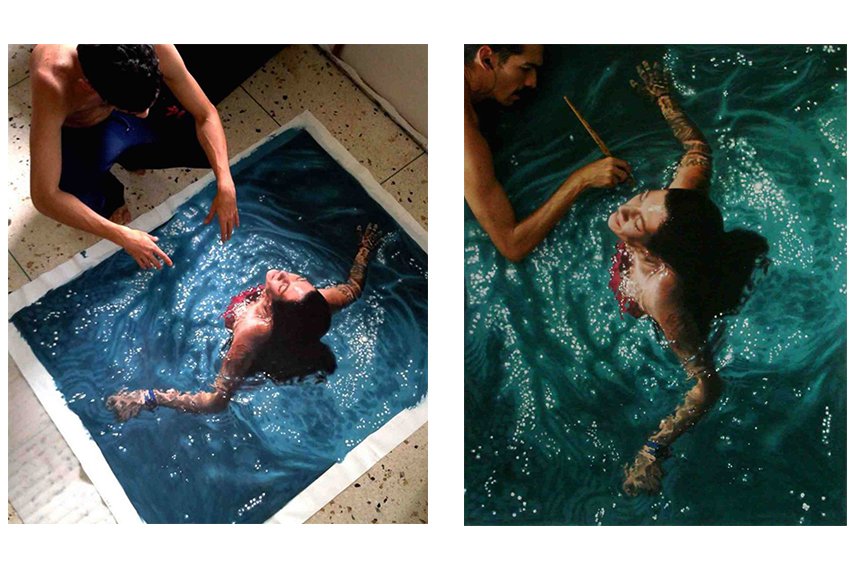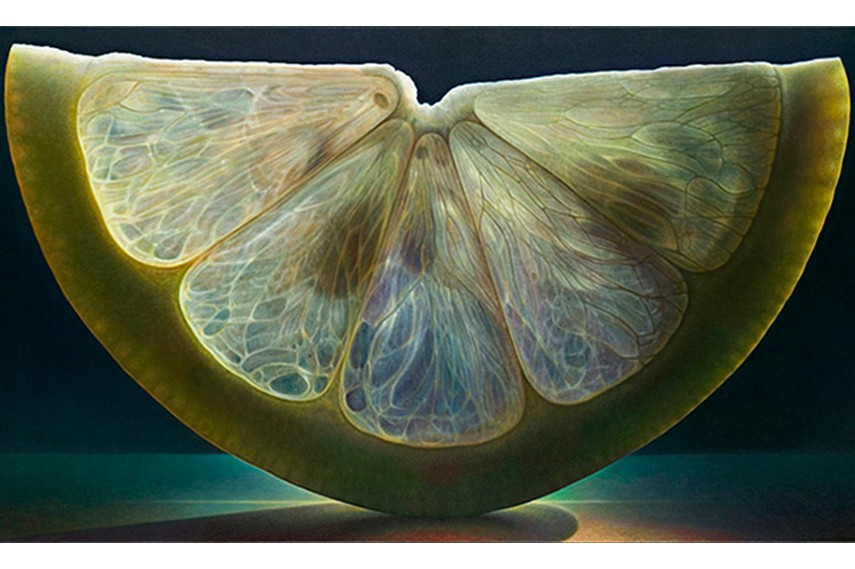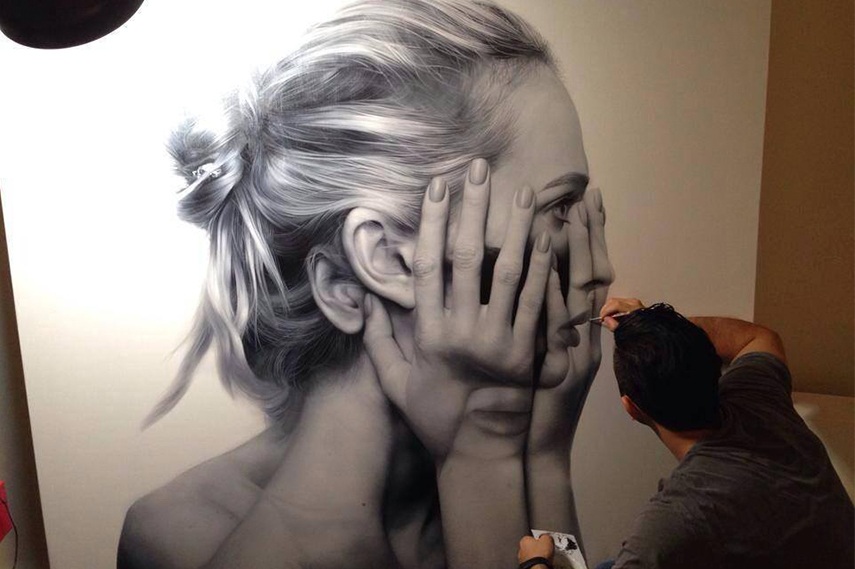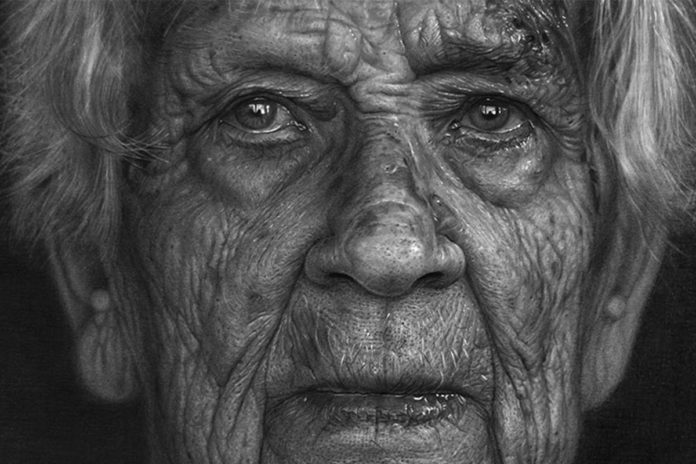Hyperrealism in Art – Ultimately, Is It Art or Skill?
Bob Lansroth
Art is often perceived as a way of detachment from reality, a key to unlocking some hidden meaning in the world that surrounds us. This is not completely true for art genres like Hyperrealism, where the line between reality and art is practically erased in paintings and sculptures these artists create. Several branches of realism are clearly focused on producing artwork which resembles a real-life image, some of them even going further and beyond.
Considered as an effective advancement of Photorealism, the newly developed style still contains some subtle differences from its predecessor. The Photorealists aimed to reproduce photographs as precisely as possible so that the human eye could not distinguish between the original and the resultant painting, whereas the Hyperrealists took the technique even further. They developed ways of including narrative, charm and emotion into painting, not leaving it bereft of “personality” as some of the Photorealism works do.
Hyperrealism can create an atmosphere of Surrealism because nobody sees the world in such detail.
Briefly known as Superrealism, Hyperrealism stood on the foundations of the US photorealistic work of the late 1960s, but to go hyper, you must go over and above, beyond the current level, which is exactly what Hyperrealism artists did. So, how far did it actually go? Did the Hyperrealists stray beyond the line of art, where their work became a mere example of superb skill, or did they, indeed, blur the lines between reality and art, making way for a new hyper-artistic expression?

The Difference Between Hyperrealism and Photorealism Style
The origin of the term Hyperrealism (Hyperréalisme) could be traced back to 1973, when Isy Brachot coined for the first time as the title of a major exhibition and catalogue at his gallery in Brussels. The exhibition included influential artists such as Richte, Delcol and Gnoli, but it was dominated by the American Photorealists like Chuck Close, Robert Bechtle, Ralph Goings and Don Eddy. Ever since the event, Hyperrealism has been used as a term referring to painters influenced by the Photorealists. Following upon their roots in Photorealism, the newly grown branch of realism strived to portray the images in an ultra-realistic manner. However, it was somewhat contrasted with the literal approach found in traditional photorealist paintings of the late 20th century.
See more hyperrealistic works by Chuck Close on our marketplace!
Hyperrealism artists also relied heavily on photographic images as a reference source, but they took it one step further, aiming to create a more definitive and detailed rendering, often containing a certain amount of emotion and narrative. While Photorealists tended to imitate the photograph, Hyperrealistic painters strived to achieve a different pictorial design overall, by incorporating an element that might not be there in reality. They consciously entailed a softer and much more complex focus on the depicted subject, creating an illusion of a new reality not seen in the original photo. Still far from being surreal, the displayed illusions were captivating depictions of reality, subtly enhanced with a fresh layer of vision.

The Simulation of Something Which Never Really Existed
So, how can you distinctly define a hyperrealistic image when you see one? Sometimes it is not an easy task, the distinctions and differences may be very subtle and hidden from the first glance. Mainly, it is the textures, surfaces, shadows and lighting effects that are painted to appear clearer and more definite, exposing the hints of Hyperrealism. Using the philosophy of Jean Baudrillard, Hyperrealism is based on “the simulation of something which never really existed.” Relying upon digital imagery and the high-resolution pictures produced by digital cameras, Hyperreal paintings and sculptures expand upon the image and create a new sense of reality, a false reality which acts as a convincing illusion. Emotional, social, political and cultural elements are incorporated as a thematic element in the newly formed “reality”. Hyperrealists often include preliminary drawings or grisaille painting and molds into their creative process. To achieve that high of a level of accuracy, the artists usually employ photographic slide projections or multi-media projectors onto canvases or other rudimentary techniques like gridding. As for the sculptures, polyesters are applied directly to the human body or mold. There is no denying the high level of technical prowess required for this unique creative process, the masters of the genre like Chuck Close, Bert Monroy, Denis Peterson and others, are praised for their skill and ability to transform their vision into an astounding piece of art. Many artists display their creative talent through Hyperrealism, however, not all of the public and critics share the same kind of admiration for the genre…

The Case for Hyperrealism Art
In a world where anything can be art as long as an artist says so, an abundance of artistic works that require little to no actual skill is being praised as masterpieces and glorified as creative expressions of the modern times. So, why shouldn’t we celebrate and appreciate something which requires immense discipline, painstaking effort and a great level of skill? Hyperrealistic pieces are often derided for offering nothing beyond what a photograph or a digital image could offer, beyond the display of technical skill of an artist. Based upon that notion, hyperrealists are sometimes dismissed as “pointless”, but not all art must have an “artistic” point or any kind for that matter. Beyond the over-excitability with technical prowess, what Hyperrealism brings to the table is an embellished, heightened sense of reality, translated from an existing image in real life to a different vision of contradictions. Imperfections are what constitutes beauty, Hyperrealism thrives on that, it does not erase the blemishes, it does not straighten out faults and optimize the image to become flawless, it incorporates these elements to produce a layer of vision that would otherwise remain unseen.
Through awe-inspiring manual dexterity and prowess, the artists create a tangible solidity and physical presence. The details carry more clarity than in nature, hyperrealistic pieces are typically ten to twenty times bigger than the actual size of the original photographic reference source, thus providing us with an enhanced view of reality. Art hides both in the creative process and the finalized work, and the creative process of Hyperrealism is one of the most intricate ones in art. The finalized product of hyperrealists often questions our perceptions of reality, exploring the limits of human vision. Undeniably, it is an art form no matter how you look at it, either from the craftsmanship and skill point of view or if you admire the subtle layers of narrative added to the existing image. Hyperrealism still makes people’s jaws drop as they revel in some of the most precise and detailed works of art.

Realism has played an important role in art history ever since the discovery of perspective. Here, John Russell Taylor delineates the artist’s endeavor to re-create the smallest detail, from centuries before the invention of photography to the present day. This book has been published to complement a series of shows called “Exactitude” at London’s Plus One Gallery of contemporary artists working in a figurative, hyperrealist style. The diversity of such works, whether still lifes, extreme close-ups, large-scale cityscapes, landscapes, or commercial packaging, is revealed. The artists, including Pedro Campos, Clive Head, Ben Johnson, David Ligare, Cynthia Poole, John Salt, Cesar Santander, Ben Schonzeit, and Tjalf Sparnaay, come from all over the world but are united here by their meticulous approach to their work whether they are depicting people, American diners, book spines, or car engines. 545 color, 5 b&w illustrations.
All images used for illustrative purposes only




